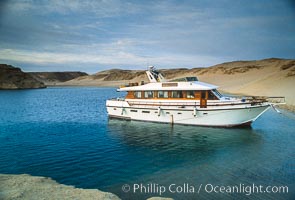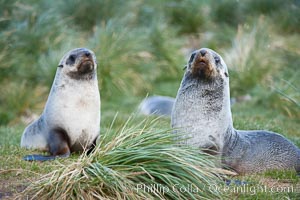
Antarctic fur seals, on tussock grass slopes near Grytviken.
Species: Antarctic fur seal, Arctocephalus gazella
Location: Grytviken, South Georgia Island
Image ID: 24414
Species: Antarctic fur seal, Arctocephalus gazella
Location: Grytviken, South Georgia Island
Image ID: 24414
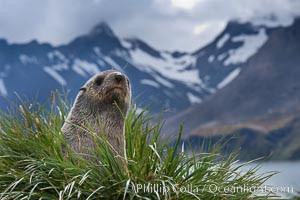
Antarctic fur seal on tussock grass, with the mountains of South Georgia Island and Fortuna Bay in the background.
Species: Antarctic fur seal, Arctocephalus gazella
Location: Fortuna Bay, South Georgia Island
Image ID: 24594
Species: Antarctic fur seal, Arctocephalus gazella
Location: Fortuna Bay, South Georgia Island
Image ID: 24594
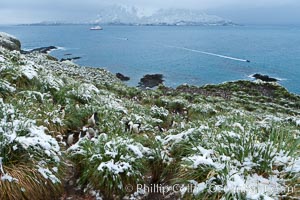
Snow covers tussock grass and macaroni penguins, above Cooper Bay.
Species: Macaroni penguin, Eudyptes chrysolophus
Location: Cooper Bay, South Georgia Island
Image ID: 24695
Species: Macaroni penguin, Eudyptes chrysolophus
Location: Cooper Bay, South Georgia Island
Image ID: 24695
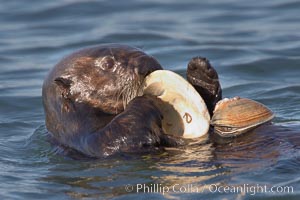
A sea otter eats a clam that it has taken from the shallow sandy bottom of Elkhorn Slough. Because sea otters have such a high metabolic rate, they eat up to 30% of their body weight each day in the form of clams, mussels, urchins, crabs and abalone. Sea otters are the only known tool-using marine mammal, using a stone or old shell to open the shells of their prey as they float on their backs.
Species: Sea otter, Enhydra lutris
Location: Elkhorn Slough National Estuarine Research Reserve, Moss Landing, California
Image ID: 21609
Species: Sea otter, Enhydra lutris
Location: Elkhorn Slough National Estuarine Research Reserve, Moss Landing, California
Image ID: 21609
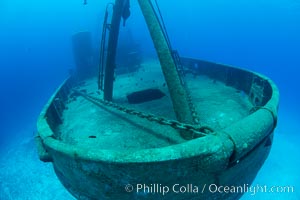
USS Kittiwake wreck, sunk off Seven Mile Beach on Grand Cayman Island to form an underwater marine park and dive attraction.
Location: Grand Cayman, Cayman Islands
Image ID: 32142
Location: Grand Cayman, Cayman Islands
Image ID: 32142
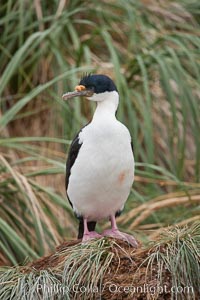
Imperial shag or blue-eyed shag, in tussock grass. The Imperial Shag is about 30" long and 4-8 lbs, with males averaging larger than females. It can dive as deep as 80' while foraging for small benthic fish, crustaceans, polychaetes, gastropods and octopuses.
Species: Imperial shag, Leucocarbo atriceps, Phalacrocorax atriceps
Location: New Island, Falkland Islands, United Kingdom
Image ID: 23762
Species: Imperial shag, Leucocarbo atriceps, Phalacrocorax atriceps
Location: New Island, Falkland Islands, United Kingdom
Image ID: 23762
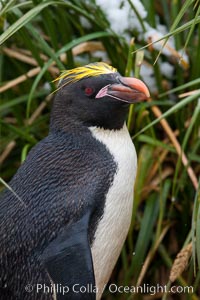
Macaroni penguin, amid tall tussock grass, Cooper Bay, South Georgia Island.
Species: Macaroni penguin, Eudyptes chrysolophus
Location: Cooper Bay, South Georgia Island
Image ID: 24683
Species: Macaroni penguin, Eudyptes chrysolophus
Location: Cooper Bay, South Georgia Island
Image ID: 24683
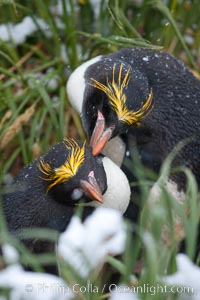
Macaroni penguin, amid tall tussock grass, Cooper Bay, South Georgia Island.
Species: Macaroni penguin, Eudyptes chrysolophus
Location: Cooper Bay, South Georgia Island
Image ID: 24710
Species: Macaroni penguin, Eudyptes chrysolophus
Location: Cooper Bay, South Georgia Island
Image ID: 24710
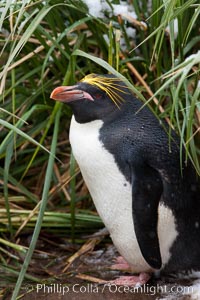
Macaroni penguin, amid tall tussock grass, Cooper Bay, South Georgia Island.
Species: Macaroni penguin, Eudyptes chrysolophus
Location: Cooper Bay, South Georgia Island
Image ID: 24711
Species: Macaroni penguin, Eudyptes chrysolophus
Location: Cooper Bay, South Georgia Island
Image ID: 24711
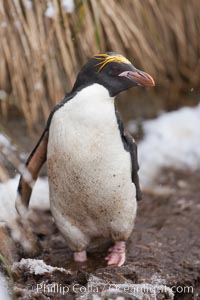
Macaroni penguin, amid tall tussock grass, Cooper Bay, South Georgia Island.
Species: Macaroni penguin, Eudyptes chrysolophus
Location: Cooper Bay, South Georgia Island
Image ID: 24713
Species: Macaroni penguin, Eudyptes chrysolophus
Location: Cooper Bay, South Georgia Island
Image ID: 24713
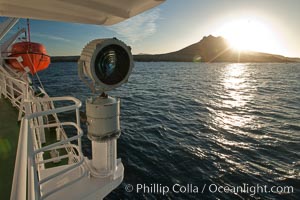
Steeple Jason Island viewed from the M/V Polar Star. Steeple Jason is one of the remote Jason Group of Islands in the West Falklands. Two large mounds of tussock grass, common throughout the Falkland Islands, are seen. Uninhabited, the island is spectacular both for its rugged scenery and its enormous breeding colony of black-browed albatross. Steeple Jason Island is now owned and administered by the Wildlife Conservation Society.
Location: Steeple Jason Island, Falkland Islands, United Kingdom
Image ID: 24285
Location: Steeple Jason Island, Falkland Islands, United Kingdom
Image ID: 24285
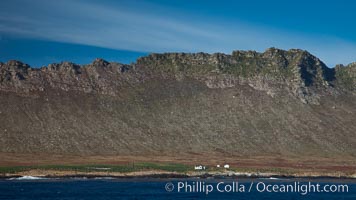
Steeple Jason Island, one of the remote Jason Group of Islands in the West Falklands. Two large mounds of tussock grass, common throughout the Falkland Islands, are seen. Uninhabited, the island is spectacular both for its rugged scenery and its enormous breeding colony of black-browed albatross. Steeple Jason Island is now owned and administered by the Wildlife Conservation Society.
Location: Steeple Jason Island, Falkland Islands, United Kingdom
Image ID: 24128
Location: Steeple Jason Island, Falkland Islands, United Kingdom
Image ID: 24128
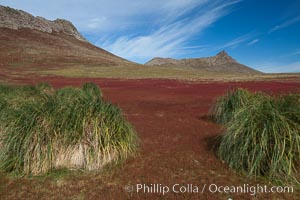
Steeple Jason Island, one of the remote Jason Group of Islands in the West Falklands. Two large mounds of tussock grass, common throughout the Falkland Islands, are seen. Uninhabited, the island is spectacular both for its rugged scenery and its enormous breeding colony of black-browed albatross. Steeple Jason Island is now owned and administered by the Wildlife Conservation Society.
Location: Steeple Jason Island, Falkland Islands, United Kingdom
Image ID: 24163
Location: Steeple Jason Island, Falkland Islands, United Kingdom
Image ID: 24163
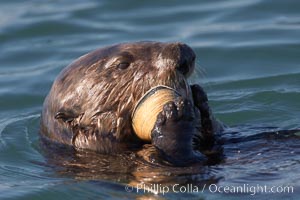
A sea otter eats a clam that it has taken from the shallow sandy bottom of Elkhorn Slough. Because sea otters have such a high metabolic rate, they eat up to 30% of their body weight each day in the form of clams, mussels, urchins, crabs and abalone. Sea otters are the only known tool-using marine mammal, using a stone or old shell to open the shells of their prey as they float on their backs.
Species: Sea otter, Enhydra lutris
Location: Elkhorn Slough National Estuarine Research Reserve, Moss Landing, California
Image ID: 21622
Species: Sea otter, Enhydra lutris
Location: Elkhorn Slough National Estuarine Research Reserve, Moss Landing, California
Image ID: 21622
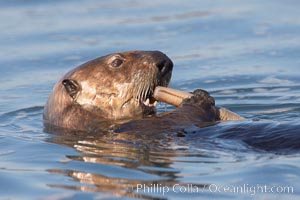
A sea otter eats a clam that it has taken from the shallow sandy bottom of Elkhorn Slough. Because sea otters have such a high metabolic rate, they eat up to 30% of their body weight each day in the form of clams, mussels, urchins, crabs and abalone. Sea otters are the only known tool-using marine mammal, using a stone or old shell to open the shells of their prey as they float on their backs.
Species: Sea otter, Enhydra lutris
Location: Elkhorn Slough National Estuarine Research Reserve, Moss Landing, California
Image ID: 21640
Species: Sea otter, Enhydra lutris
Location: Elkhorn Slough National Estuarine Research Reserve, Moss Landing, California
Image ID: 21640
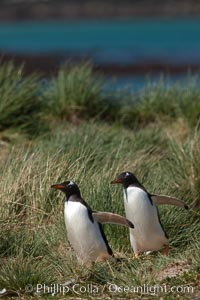
Magellanic penguins walk through tussock grass. After foraging in the ocean for food, the penguins make their way to the interior of the island to rest at their colony.
Species: Gentoo penguin, Pygoscelis papua
Location: Carcass Island, Falkland Islands, United Kingdom
Image ID: 23972
Species: Gentoo penguin, Pygoscelis papua
Location: Carcass Island, Falkland Islands, United Kingdom
Image ID: 23972
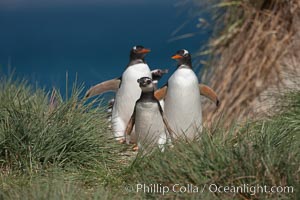
Mixed group of Magellanic and gentoo penguins, walk from the ocean through tall tussock grass to the interior of Carcass Island.
Species: Gentoo penguin, Magellanic penguin, Pygoscelis papua, Spheniscus magellanicus
Location: Carcass Island, Falkland Islands, United Kingdom
Image ID: 23981
Species: Gentoo penguin, Magellanic penguin, Pygoscelis papua, Spheniscus magellanicus
Location: Carcass Island, Falkland Islands, United Kingdom
Image ID: 23981
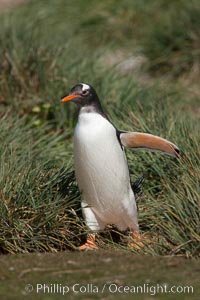
Magellanic penguin walks through tussock grass. After foraging in the ocean for food, the penguin make its way to the interior of the island to rest at its colony.
Species: Gentoo penguin, Pygoscelis papua
Location: Carcass Island, Falkland Islands, United Kingdom
Image ID: 23999
Species: Gentoo penguin, Pygoscelis papua
Location: Carcass Island, Falkland Islands, United Kingdom
Image ID: 23999
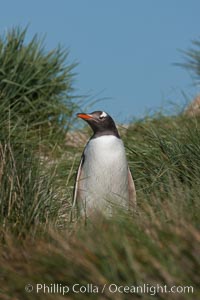
Magellanic penguin walks through tussock grass. After foraging in the ocean for food, the penguin make its way to the interior of the island to rest at its colony.
Species: Gentoo penguin, Pygoscelis papua
Location: Carcass Island, Falkland Islands, United Kingdom
Image ID: 24004
Species: Gentoo penguin, Pygoscelis papua
Location: Carcass Island, Falkland Islands, United Kingdom
Image ID: 24004
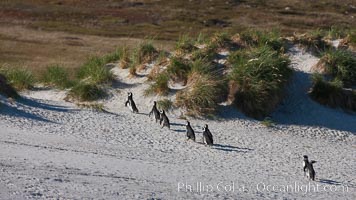
Magellanic penguins walk across sandy beach, heading over tussock grass to the interior of Carcass Island to their underground burrows.
Species: Magellanic penguin, Spheniscus magellanicus
Location: Carcass Island, Falkland Islands, United Kingdom
Image ID: 24032
Species: Magellanic penguin, Spheniscus magellanicus
Location: Carcass Island, Falkland Islands, United Kingdom
Image ID: 24032
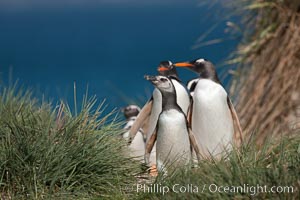
Mixed group of Magellanic and gentoo penguins, walk from the ocean through tall tussock grass to the interior of Carcass Island.
Species: Gentoo penguin, Magellanic penguin, Pygoscelis papua, Spheniscus magellanicus
Location: Carcass Island, Falkland Islands, United Kingdom
Image ID: 24044
Species: Gentoo penguin, Magellanic penguin, Pygoscelis papua, Spheniscus magellanicus
Location: Carcass Island, Falkland Islands, United Kingdom
Image ID: 24044
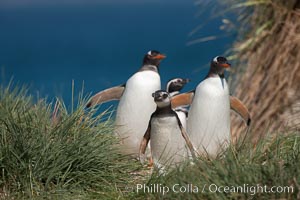
Mixed group of Magellanic and gentoo penguins, walk from the ocean through tall tussock grass to the interior of Carcass Island.
Species: Gentoo penguin, Magellanic penguin, Pygoscelis papua, Spheniscus magellanicus
Location: Carcass Island, Falkland Islands, United Kingdom
Image ID: 24045
Species: Gentoo penguin, Magellanic penguin, Pygoscelis papua, Spheniscus magellanicus
Location: Carcass Island, Falkland Islands, United Kingdom
Image ID: 24045
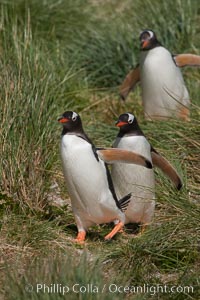
Magellanic penguins walk through tussock grass. After foraging in the ocean for food, the penguins make their way to the interior of the island to rest at their colony.
Species: Gentoo penguin, Pygoscelis papua
Location: Carcass Island, Falkland Islands, United Kingdom
Image ID: 24047
Species: Gentoo penguin, Pygoscelis papua
Location: Carcass Island, Falkland Islands, United Kingdom
Image ID: 24047
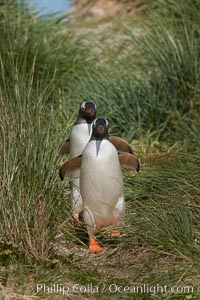
Magellanic penguins walk through tussock grass. After foraging in the ocean for food, the penguins make their way to the interior of the island to rest at their colony.
Species: Gentoo penguin, Pygoscelis papua
Location: Carcass Island, Falkland Islands, United Kingdom
Image ID: 24048
Species: Gentoo penguin, Pygoscelis papua
Location: Carcass Island, Falkland Islands, United Kingdom
Image ID: 24048
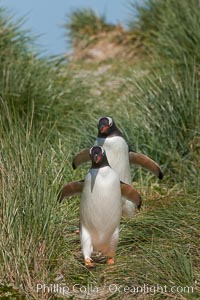
Magellanic penguins walk through tussock grass. After foraging in the ocean for food, the penguins make their way to the interior of the island to rest at their colony.
Species: Gentoo penguin, Pygoscelis papua
Location: Carcass Island, Falkland Islands, United Kingdom
Image ID: 24049
Species: Gentoo penguin, Pygoscelis papua
Location: Carcass Island, Falkland Islands, United Kingdom
Image ID: 24049
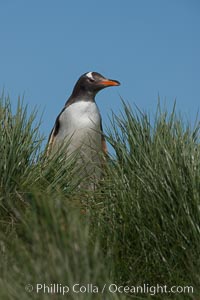
Gentoo penguin, atop of hill of tall tussock grass.
Species: Gentoo penguin, Pygoscelis papua
Location: Carcass Island, Falkland Islands, United Kingdom
Image ID: 24052
Species: Gentoo penguin, Pygoscelis papua
Location: Carcass Island, Falkland Islands, United Kingdom
Image ID: 24052
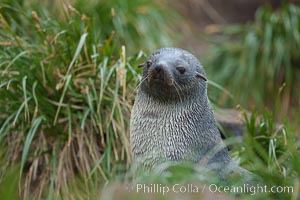
Antarctic fur seal on tussock grass.
Species: Antarctic fur seal, Arctocephalus gazella
Location: Fortuna Bay, South Georgia Island
Image ID: 24627
Species: Antarctic fur seal, Arctocephalus gazella
Location: Fortuna Bay, South Georgia Island
Image ID: 24627
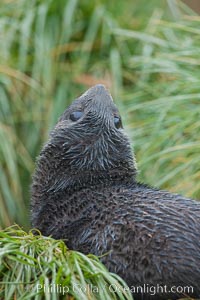
Antarctic fur seal on tussock grass.
Species: Antarctic fur seal, Arctocephalus gazella
Location: Fortuna Bay, South Georgia Island
Image ID: 24667
Species: Antarctic fur seal, Arctocephalus gazella
Location: Fortuna Bay, South Georgia Island
Image ID: 24667
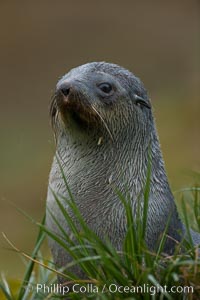
Antarctic fur seal on tussock grass.
Species: Antarctic fur seal, Arctocephalus gazella
Location: Fortuna Bay, South Georgia Island
Image ID: 24677
Species: Antarctic fur seal, Arctocephalus gazella
Location: Fortuna Bay, South Georgia Island
Image ID: 24677
